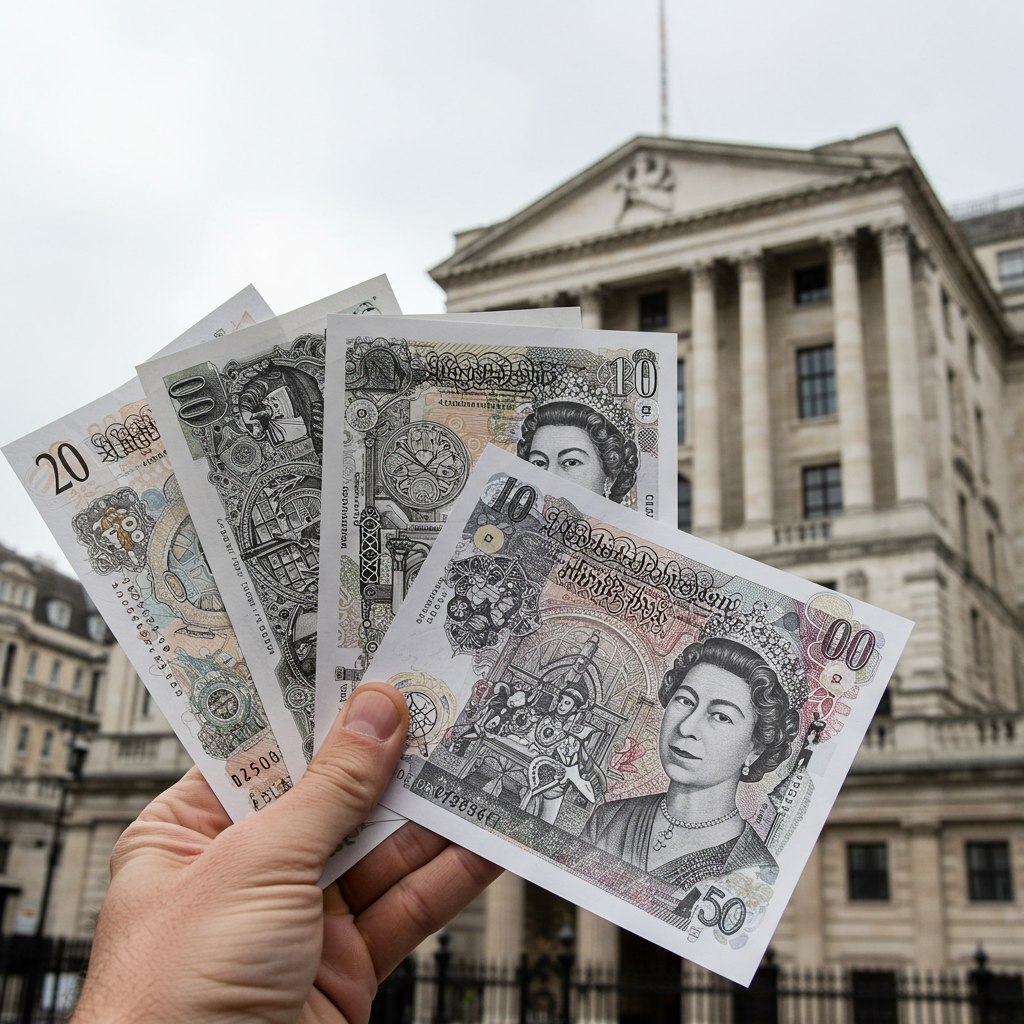Britain’s familiar currency is set for a significant refresh. The Bank of England is embarking on the first major redesign of its banknotes in over half a century, and they’re asking for your input. This pivotal moment could see a departure from the tradition of featuring solely historical figures on the reverse side, a practice in place since the early 1970s. Get ready to share your vision for the next series of £5, £10, £20, and £50 notes.
Banknotes are much more than just a way to pay for goods and services. As Victoria Cleland, the Bank’s chief cashier, whose signature graces every note, puts it, they are “a symbolic representation of our collective national identity.” They offer a unique chance to celebrate what makes the UK distinct. This redesign isn’t just about aesthetics; it also aims to enhance security features, making notes harder to counterfeit, and improve durability for longer life in circulation.
Have Your Say: The public Consultation Explained
For the first time in decades, the Bank of England is directly inviting the public to influence the visual identity of its cash. This is a genuine opportunity for everyone across the UK to contribute to this important cultural canvas. The consultation focuses on potential broad themes rather than specific individuals or images at this stage.
The process is straightforward. You can submit your thoughts and suggestions via an online form available on the Bank of England’s official website. Alternatively, you can send your ideas through the post. The Bank is keen to hear from a wide range of voices to ensure the final designs resonate with people nationwide. This public call follows a broader initiative launched by the Bank earlier this year to update its overall visual identity, including its website and logo, aiming for more accessible communication.
Deadline to Participate
Make sure your voice is heard! The consultation period is open for several weeks. All submissions, whether online or by post, must be received by the end of July. Specifically, the deadline for online submissions is 11:59 pm on July 31st. Don’t miss your chance to contribute to the future look of UK banknotes.
Exploring Potential Themes for New Banknotes
While retaining the focus on notable historical figures remains an option, the Bank of England has put forward a list of potential new directions for the banknote designs. These themes are intended to spark public imagination and discussion about what aspects of the UK’s identity should be celebrated.
The proposed themes include:
Architecture and Landmarks: Featuring iconic buildings, historical sites, or significant structures from across the country.
Arts, Culture, and Sport: Encompassing diverse areas like literature, music, film, food traditions, or memorable sporting achievements.
Noteworthy Events in History: Highlighting significant moments or movements that have shaped the nation.
Innovation: Celebrating British advancements in technology, science, or ideas that have had a global impact.
- Nature: Showcasing the UK’s diverse flora, fauna, natural landscapes, rivers, or coastal scenes.
- www.bbc.com
- metro.co.uk
- www.bbc.com
- www.centralbanking.com
- www.bbc.com
These themes offer a wealth of possibilities, moving beyond portraiture to potentially feature everything from a majestic bridge or ancient castle to native wildlife or symbols of technological breakthroughs.
Beyond the Bank’s Suggestions
Crucially, the consultation isn’t limited to the themes proposed by the Bank. The public is actively encouraged to suggest entirely new themes not on the initial list. This opens the door to a vast array of creative ideas, even if some humorous suggestions like “Notey McNoteface” might inevitably surface, sparking lively debate. This collaborative approach aims to capture the public imagination and identify themes that truly resonate nationally.
Banknotes as “Little Pieces of Art”
Chief Cashier Victoria Cleland describes banknotes as “little pieces of art in our pocket.” However, she emphasizes that selecting designs involves practical considerations beyond just visual appeal. Banknotes must incorporate complex security features to prevent counterfeiting, a critical function for maintaining public trust in cash. Accessibility is also a key factor, ensuring the notes are easy to identify and use for people with visual impairments or other disabilities.
Finding a theme that is both enduring and not divisive is essential. The chosen subject matter needs to stand the test of time and represent elements of the UK that most people can feel a connection to, avoiding controversial figures or events.
A Look Back: History on Currency
The tradition of featuring historical figures on Bank of England notes on the reverse side began in 1970 with William Shakespeare. Before that, since 1960, only the reigning monarch appeared on the notes. The current series features a diverse line-up: Sir Winston Churchill (£5), Jane Austen (£10), JMW Turner (£20), and Alan Turing (£50).
However, placing individuals on currency has occasionally led to controversy. A significant backlash occurred in 2013 due to the absence of any women on notes, apart from Queen Elizabeth II, prompting calls for greater representation. Moving towards broader themes like nature or innovation could potentially offer a way to celebrate national identity without the debates that can arise from choosing specific individuals.
International Perspectives
The UK isn’t alone in using its currency as a canvas for national identity. Banknotes issued by banks in Scotland and Northern Ireland already feature themes like local landmarks and native animals, such as otters. Across the Eurozone, banknotes depict abstract architectural styles rather than people or specific national monuments, aiming for neutrality among member states.
Globally, there’s a wide variety of approaches. Some countries feature incredibly colourful and detailed designs. For example, the Bermuda Monetary Authority’s $5 note won an international banknote award last year. It features marine life, landscapes like Horseshoe Bay, and even a profile of King Charles III, showcasing a blend of nature, geography, and the monarch. This demonstrates the potential for engaging and visually striking currency designs that resonate with national characteristics.
The Road Ahead: From Idea to Your Pocket
Participating in the consultation is the first step in a process that typically takes several years to complete. Once the submission period closes, Bank officials will carefully consider all proposed themes and public feedback. Following the selection of a theme or themes, the Bank may then request specific images or concepts to represent the chosen subjects.
The final decision on what exactly features on the next series of banknotes ultimately rests with the Governor of the Bank of England. While public opinion is a vital part of the consultation, the Governor holds the authority to make the concluding choice, balancing public preference with practical and security requirements.
The Enduring Role of Cash
Despite the rise of digital payment methods, cash remains an important part of the UK economy. There are currently over 4.7 billion Bank of England notes circulating, with a collective value estimated to be around £86 billion. While cash use has fallen to about 12% of transactions as payment technology evolves, the Bank of England remains firmly committed to providing physical cash for everyone who wishes to use it.
This commitment underscores the importance of the banknote redesign. Ensuring notes are secure, durable, and visually representative of the UK’s identity is crucial for maintaining confidence in cash for the millions who still rely on it daily. The new series will continue to feature an image of the monarch on the obverse side, reflecting the enduring symbol of the head of state on the nation’s currency.
Frequently Asked Questions
What kind of themes is the Bank of England considering for the new banknotes?
The Bank is proposing themes beyond historical figures, including Architecture and Landmarks, Arts, Culture, and Sport, Noteworthy Events in History, Innovation, and Nature. However, the public can also suggest entirely new themes. These themes could feature things like buildings, animals, events, technologies, or landscapes.
How can the public submit their ideas for the banknote redesign?
The public can participate in the consultation by submitting their views and theme suggestions through an online form on the Bank of England’s official website. Alternatively, submissions can also be sent by post. The deadline for all entries is the end of July (specifically 11:59 pm on July 31st for online submissions).
Why is the Bank of England redesigning its banknotes after more than 50 years?
This is the first major redesign of the reverse side of the notes in over five decades, potentially moving away from the sole focus on historical figures which began in 1970. Key reasons include enhancing security features to combat counterfeiting, improving note durability, and using banknotes as a symbolic representation of the UK’s national identity and an opportunity to celebrate the nation through diverse themes.
A Canvas for Identity
The redesign of Bank of England banknotes offers a rare opportunity to debate and decide what aspects of the UK’s identity should be carried in our pockets. By inviting public input, the Bank is seeking to create a series of notes that are not only secure and durable but also resonate culturally with the nation they represent. Whether the final designs feature beloved landscapes, groundbreaking innovations, or perhaps a blend of ideas, this consultation ensures that the next generation of UK currency will have a little piece of the public’s vision embedded within it. Make sure to submit your ideas before the deadline!



